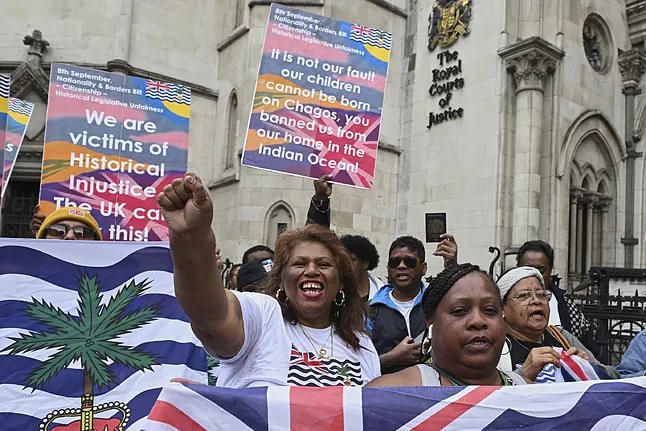The United Kingdom hands over the Chagos archipelago (and the massive US base on Diego Garcia island) to Mauritius (and to the Chinese fishing fleet). The final obstacle to the agreement was lifted today, with the authorization of the British Justice for an agreement reached several months ago by the Labour government of Keir Starmer.
The Chagos Islands are not well known. They are a series of atolls located in the northern Indian Ocean, approximately halfway between Kenya and Indonesia, about 500 kilometers south of the nearest archipelago, the Maldives, and 1,800 kilometers from the nearest landmass, which is the southern tip of India. Critics of the agreement claim that it is replacing one imperialism with another, given that Mauritius, which gained independence in 1968 from Great Britain, has no historical ties to the Chagos.
But precisely because of its remote nature, one of these islands, Diego Garcia - named after the Spanish navigator Diego García de Moguer - has become the major US base in the Indian Ocean. That base remains. The British government will pay Mauritius 101 million pounds sterling (120 million euros) annually for the rent of the island.
Diego Garcia is the southernmost island in the archipelago. It began to be used as a military station in the seventies, but its importance skyrocketed after the Islamic revolution in Iran in 1979. In the eighties, that remote military installation that literally does not need to be kept secret became the fastest-growing US military base in the world. Since then, Washington has used it intensively, deploying its largest strategic bombers there, amidst truly paradisiacal beaches surrounded by enormous coral reefs where soldiers marvel at the amount of fishing they can do, which is literally the only thing to do on the island, apart from collecting coconuts. The British presence is basically symbolic.
Currently, there are at least four B-52 bombers on Diego Garcia, capable of launching dozens of nuclear missiles. These aircraft replaced at least six stealth B-2 bombers, also with nuclear capability, which were sent to the island in February. The arrival of the B-2 bombers sparked speculation about a possible US attack on Iran's nuclear facilities, although they ended up being used to bomb the Houthi rebels in Yemen. Six F-15 fighters have also arrived.
The great advantage of Diego Garcia is that it is far from everything, but also equidistant from numerous hotspots around the world. Therefore, it is ideal for use by the large US strategic bombers - the B-1, B-2, and B-52 - designed to attack the Soviet Union from the United States. During the Kuwait War in 1991, the B-52 bombers that flattened Iraqi defenses took off from that island, on seventeen-hour flights covering 14,000 kilometers round trip. From 2001, those planes, along with the more modern B-1s, carried out those missions again, first against Afghanistan and then against Iraq. In the invasion of the latter country in 2003, the US also used B-2 bombers based on Diego Garcia.
In practice, the atoll is a US base. The British military presence is minimal, and London has never hindered Washington from doing as it pleases there. This was evident when Diego Garcia became one of the 'secret prisons' of the United States during George W. Bush's 'war on terror'.
One of the most brutal aspects of Diego Garcia's history is that of its local population. The approximately 1,700 inhabitants of the atoll (the exact number is unknown because no one bothered to count them) were expelled by Great Britain between 1967 and 1971 to make way for the bombers. Their opinion was never asked. They received no compensation. Some were taken away under the pretext of being vaccinated. They were sent to Mauritius, the Seychelles, and Great Britain and were never brought back to their homes. Others were simply loaded onto boats and planes after British soldiers, on orders from their superiors, killed their pets. They received minimal compensation, and a British court ruling in 2000 stating that the expulsions were unjust had no real consequences since Diego Garcia is a military base.
